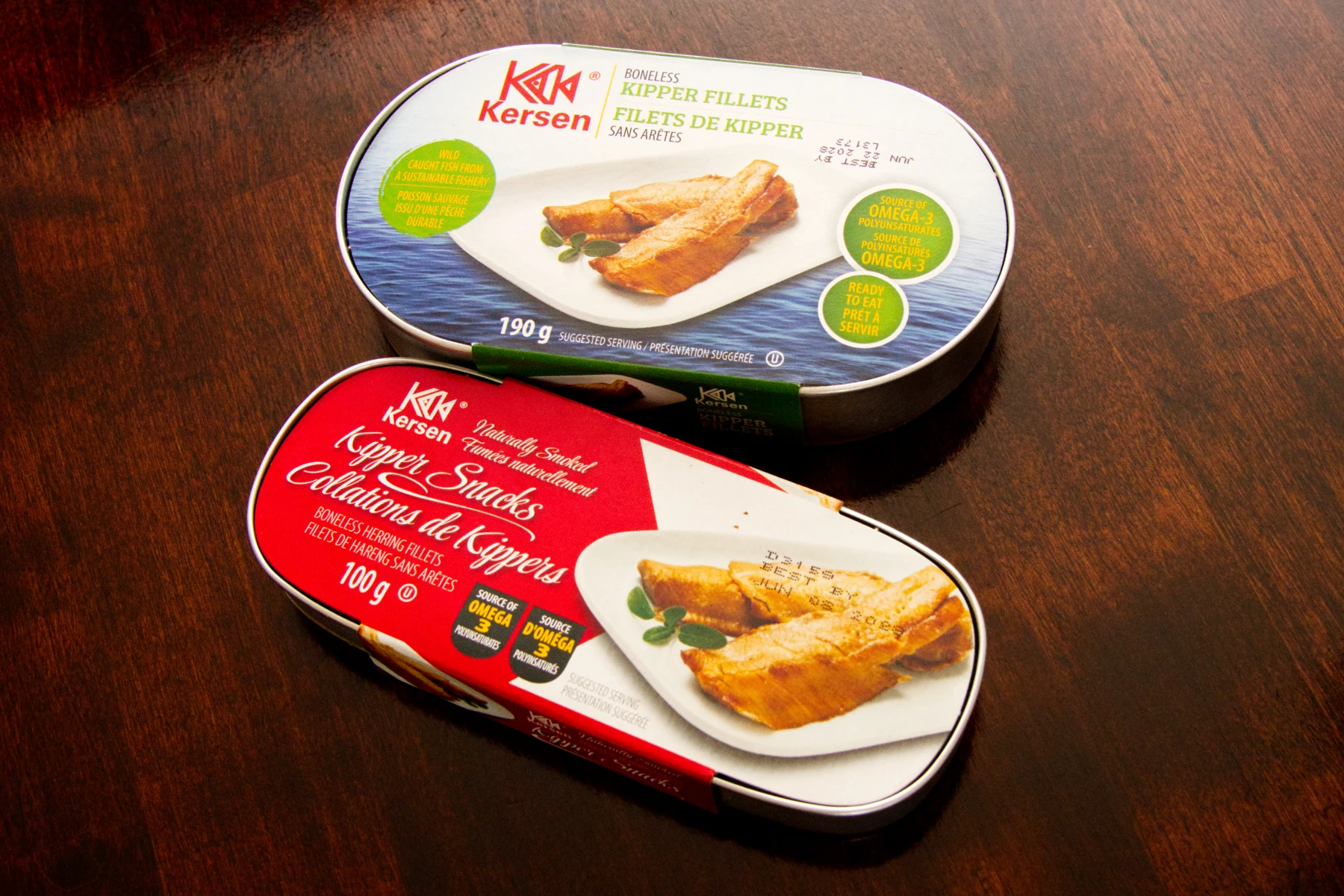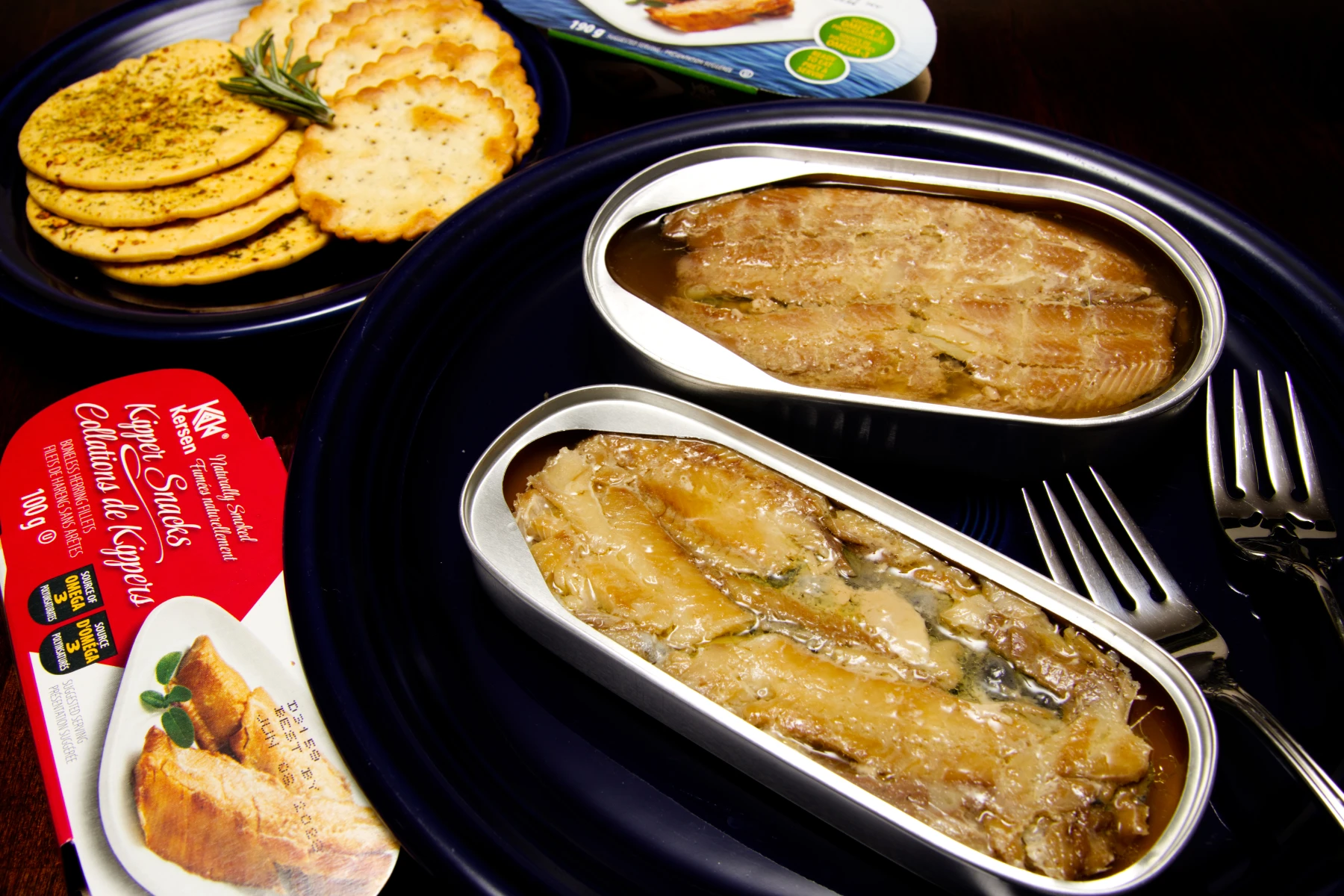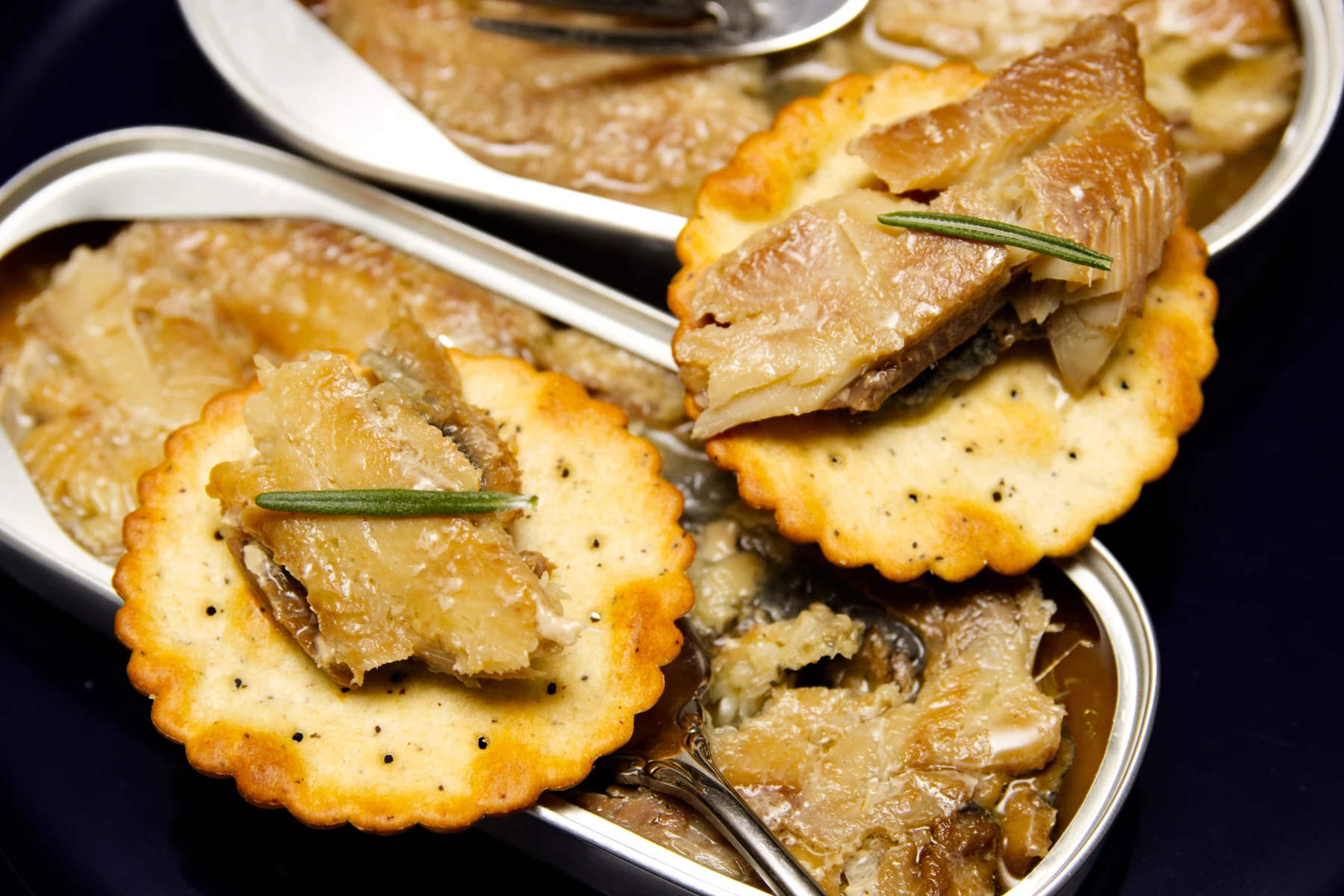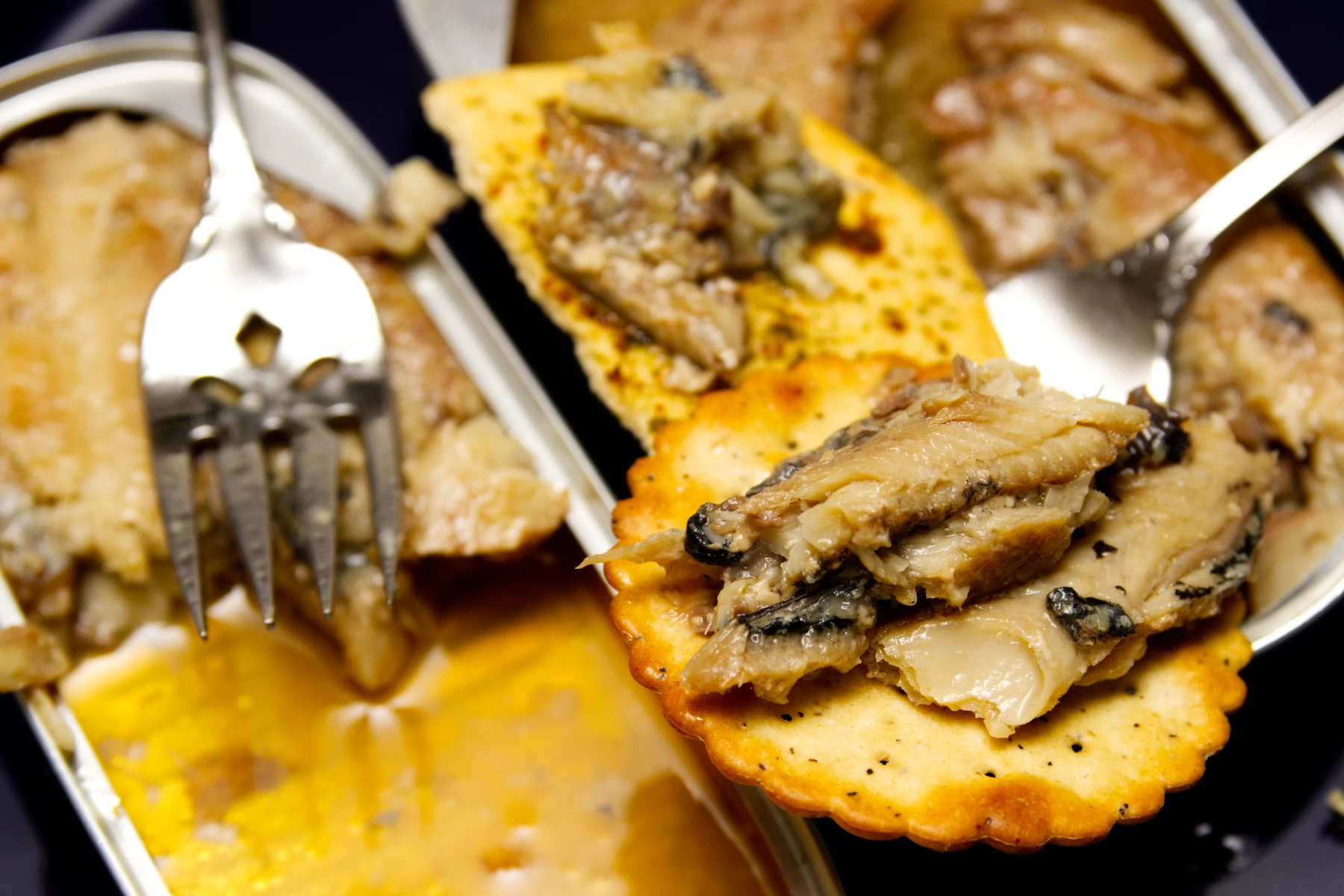Kersen Kipper Snacks & Fillets
Kipper Keepers
Originally Published: Sunday, March 3, 2024
Specs
 Two kippers, both alike in dignity.
Two kippers, both alike in dignity. Smoke Me a Kipper
Today’s dynamic duo is a pair of kippers from the Canadian waters of Nova Scotia. Kersen Seafood is a label operated by IMO Foods Ltd. based in Yarmouth, NS. IMO Foods is a cannery that produces products for brands worldwide but offer their own products under the Kersen line.
According to their website, they’ve been in operation for around 50 years and all of the fish they pack are from Nova Scotian and North Atlantic waters near the Bay of Fundy (famous for having the highest tides in the world.)
They have a decent range of different canned fish, but their kippers and herrings seem to be the most popular.
I’ll be sampling two different kipper products today for a little bit of compare and contrast. The two tins on show today are the Boneless Kipper Fillets and the Kipper Snacks.
Splitting the Difference
Before comparing specs, it’s good to define what a kipper is as it’s not a common term in many parts of the world. A kipper is just herring, split, salted, and smoked before serving. The terminology is meant to define a type of prepared fish and not a species of fish.
True to the kipper preparation style, both tins of fish were naturally smoked before canning. The snacks were canned at 100 grams while the fillets are 190 grams. Apart from the box art and the weight content, there didn’t seem to be much of a difference between the two from the outside.
The sticker price was slightly different between the two tins, clocking in at about $3.50 CAD for the snacks and $4.50 CAD for the fillets. The price difference was understandable considering the difference in weight.
Kipper Comparison
Opening the tin revealed the biggest difference between the two products immediately. The fillets had a lot more fluid content versus the snacks. Opening the tin to the fillets caused some of its brine to trickle out, while the snacks managed to contain all of its liquid content within the tin readily with no danger of spillage.
Because of the higher volume of moisture in the fillets, they had a softer texture, and it was easier to break the fillet apart using a fork. The snacks, although a bit stiffer, were not dry or tough. It was still easy to break the snack fillets apart and they kept their shape a little better. The colour of the snacks were a little darker by comparison, but not by much.
 Fillets are the top tin, snacks on the bottom.
Fillets are the top tin, snacks on the bottom.There was a hint of smoke and fishy brine from both products, but again, not a huge difference between the two.
The only thing left was the taste test. I started with the snacks.
There was a hint of smoke from the pre-canning preparation. It was not very strong and didn’t overstay its welcome. The texture of the fish was nice and firm, with a satisfying resistance. It was still quite tender and never felt dry or crumbly. There were a couple of tiny bones left in the fillet that dissolved in my mouth.
The fillet had a good balance of fat which gave it a well-rounded mouthfeel. There was just a hint of ammonia at the tail-end, not uncommon in preserved herring. The salt content was relatively low which made this product prime for adding on my own seasonings and condiments.
 Get some salty crackers with these.
Get some salty crackers with these.The fillets were next. The fillets were a lot softer, probably due to the higher moisture content. It was tender and moist, but still managed to retain its structure well, although it was a bit more difficult getting a larger piece out of the can versus the snacks. The smoke was light, probably lighter than the snacks, but still present. Most of the smokiness seemed to have leached into the brine.
The fat content felt well balanced and the ammonia note that was present in the snacks was missing here. The salt content was as restrained as the snacks.
Overall, the two products were not very different in flavours, with the most obvious differences in the texture and liquid content.
Kipper Coming, IMO
In my opinion, these were pretty good value products. I think they were probably a bit too subtly seasoned to be properly served without modifications, but the quality of the fish was great. A dash of something with a pinch of another will elevate the experience quite a bit.
 Good job Kersen, kipper coming.
Good job Kersen, kipper coming.Traditionally, kippers are served at breakfast. I could see either of these products on my breakfast plate with a couple eggs and some hashbrown. I would likely add a bit of hot sauce to give them some zing. They are also good contenders as topping for fish sandwiches or salads.
The most attractive part of the entire package is the appealing price tag. These tins are inexpensive and pretty readily available at many local stores. While not the best herrings I’ve ever had, they’re pretty tasty and the price is great.
Overall, they’re both yummy and I think deserve at least one value star for a strong showing.
Boneless Kipper Fillets
Kipper Snacks